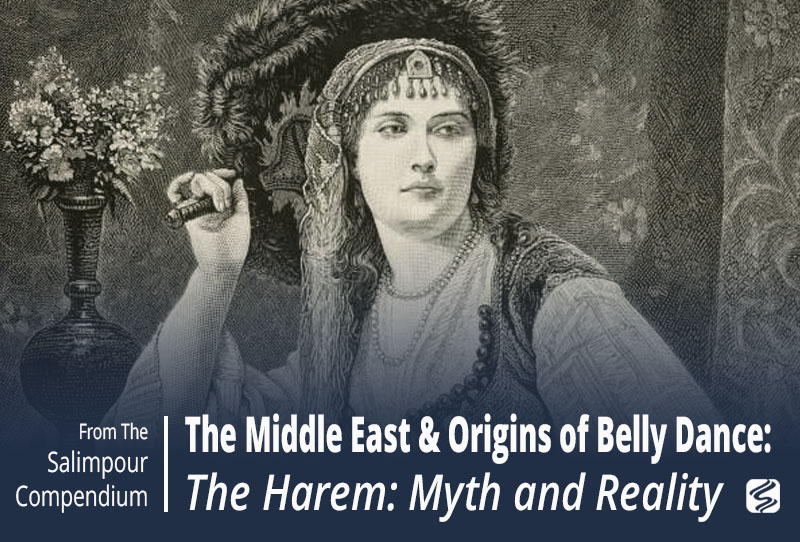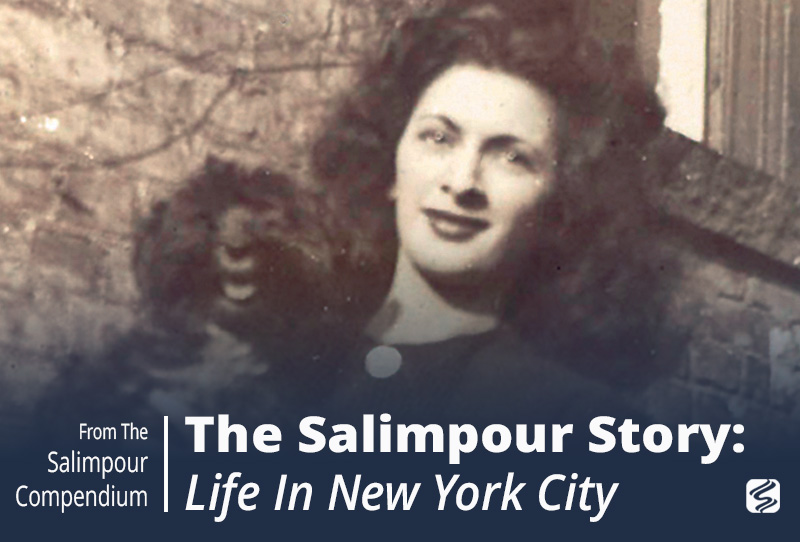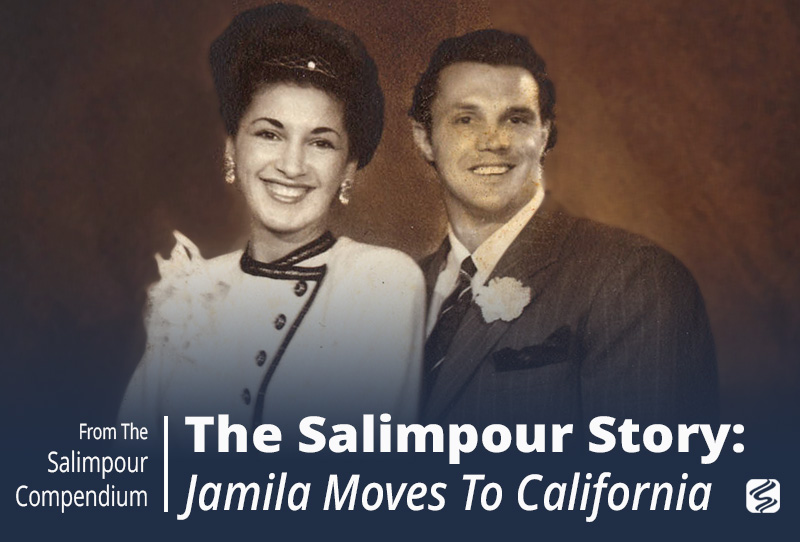The harem has been a source of fascination and fantasy in the United States and Western Europe, as seen in the arts and entertainments dating back to the 18th century, and even earlier. Many Europeans in the 19th century imagined the harem as a den of unbridled sexuality, a place in which women were kept and even imprisoned solely for the pleasure of the sultan or the patriarch of the household, who had his choice of countless wives and concubines. Western men, of course, were never allowed in Ottoman or any other harems, so their writings and paintings are pure conjecture infused with fantasy and speculation.¹ This viewpoint is evidenced in such Orientalist paintings as Le Bain Turk (The Turkish Bath), painted in by Jean-Auguste Dominique Ingres in 1832 in which pale, nude women lounge around a pool, draping themselves over one another, idly waiting for their sultan. Other paintings that depict more clothed harem residents also show them as inactive, passive, and powerless.²
The idea of harem-as-prison, particularly that of European women being kidnapped and forced to live in harems, became a popular theme in Western culture, such as in Wolfgang Amadeus Mozart’s opera The Abduction from the Seraglio.³ Islamic feminist writer Leila Ahmed says that in addition to the idea of “permitting males sexual access to more than one female,” it was the aspect of “women being freely and continuously together, and the degradation, licentiousness, and corruption that must inevitably ensue, which Western men viewed with considerable fascination.”⁴
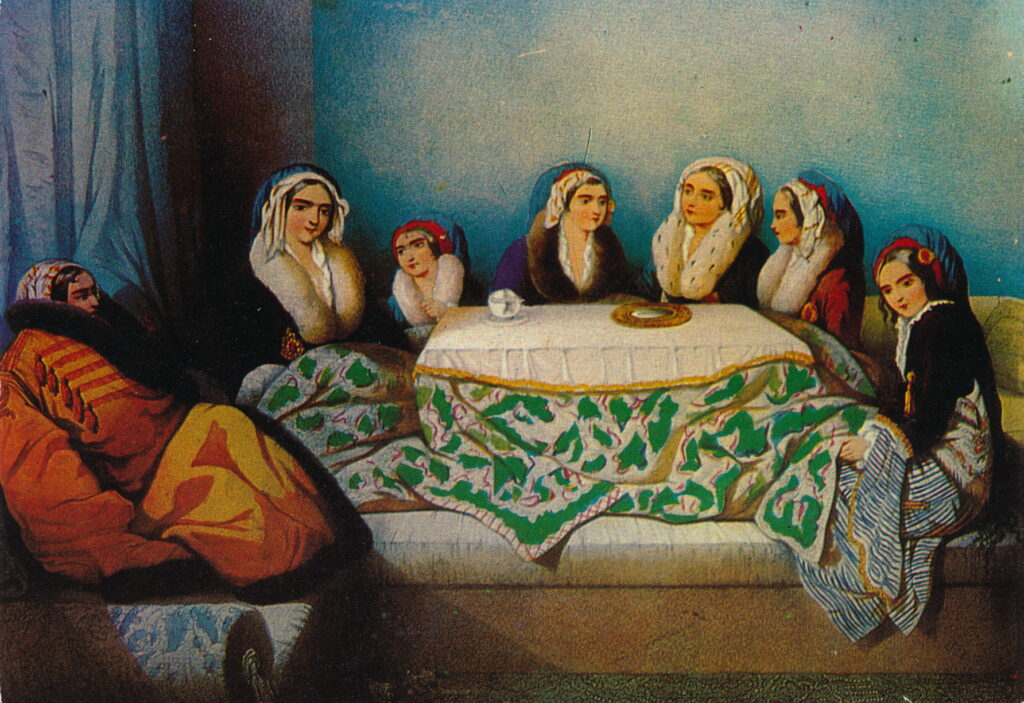
Even today, as noted by Marilyn Booth, Western, and Orientalist writing and images continue to influence popular views of the harem⁵ in both Western and Middle Eastern film, art, and performance.⁶ Many contemporary Western belly dancers have transformed the idea of the harem from a place of oppression and polygamy to one of safety and matriarchy. Dance scholar Donnalee Dox points out that in the West, “popular discourse on belly dance idealizes the harem as a space where women dance together independent of men and free from a male gaze.” She also points out that since the 1960s, belly dancers have used the idea of the harem as “a conceptual alternative to Western patriarchy” and as a “utopia” of “gender segregation.” The Western belly dancers’ imaginary harem is an “idealized community of women into which men may—or may not—be granted access,” despite the fact that polygamy (generally considered an oppressive and misogynistic practice) was the norm in the historical harem.⁷
In pre-20th century travelers’ writings, “many Europeans stuck confidently to the idea that the condition of women was deplorable and the harem a place of depravity,” according to scholar Judy Mabro.⁸ Andrea Deagon, a scholar of Oriental dance history, also tells us that many early descriptions of harems by Western travelers emphasized a “titillating fantasy” of “rooms full of sensuous sex-starved women, all for the pleasure of a single man,” such as those by Charles Nicolas Sigismond Sonnini de Manencourt in the late 18th century.⁹ Judy Mabro also says that despite adequate evidence from the writings of nineteenth-century travelers that Muslim women, except for those living in the Ottoman palace and other wealthy homes, were “free to come and go from the house and exercised considerable authority within it,” many Europeans insisted that the “condition of women was deplorable and the harem a place of depravity.” Indeed, many Western travelers and writers “referred to the harem as though it was present everywhere in the Middle East,” but most women there lived in villages. Only women travelers had been able to visit harems or speak to their female residents, and their reactions were complicated and often extremely critical.¹⁰ The most famous accounts of a woman allowed access to the women of the harem come from Lady Mary Wortley Montagu,¹¹ who presents what is a rather objective telling of a gracious Turkish woman entertaining her European guest.¹²
In its most general sense, a harem is the women’s quarters of an Islamic home, usually of an upper-class or royal family. The word itself, ḥarīm, derives from the Arabic root Ḥ-R-M, meaning forbidden, in that it is forbidden to those who do not have permission to access it. In its secular application, the word was used in reference to that portion of a Muslim house occupied by the women, because it was their ḥarām, or sanctuary.¹³ Leading scholar on the Ottoman harem, Leslie Peirce, tells us that the word harem is one of respect, suggesting religious purity and honor. She also says that it is “gender-specific only in its reference to the women of a family.” Interestingly, the most sacred or exalted places in the sixteenth-century Ottoman world were also called “harems,” such as the holy cities of Mecca and Medina. ¹⁴ The word “harem” has even more meanings, depending on the context or era to which one is referring. N. M. Penzer notes that the word refers more correctly to the people who lived in the harem, rather than the physical, architectural location.¹⁵ Scholar Leila Ahmed says that the harem “can be defined as a system that permits males sexual access to more than one female,” but it can also refer to, “and with as much accuracy, as a system whereby the female relatives of a man—wives, sisters, mother, aunts, daughters—share much of their time and their living space, and further, which enables women to have frequent and easy access to other women in their community.”¹⁶ Historical harems, for the most part, did seclude women from men, apart from a select few. Throughout Islamic history, most people have believed (and still do) that a woman who is not properly secluded (either physically or through other means, such as veiling or keeping company with women only) is considered to be undervalued by her family or without social support, and is therefore “suspicious or untrustworthy.”¹⁷ Upper- and middle-class women who lived within the private spaces of their homes would veil their faces when going out in public, in effect, taking their seclusion with them. ¹⁸
The harem as an institution has a long history in the Middle East. The Abbasid caliph’s residence in the 10th century included separate apartments for prominent women of the caliph’s family—such as the caliph’s mother, wives, concubines, and children, as well as his unmarried, divorced, or widowed aunts and sisters—and Nadia Maria El Cheikh posits that “it is probably at this time that a separate women’s quarter within the palace first emerged.” ¹⁹
Much of what we know about harems comes from the history of the Ottoman Empire, particularly of the Sultan’s royal family and quarters, but there are few first-person written accounts from those who actually lived there. ²⁰ Of course, the structure and administrative divisions of the Ottoman harem changed over the course of the empire’s six centuries, but the basic ideas remained the same. The harem at Topkapı Palace in Istanbul was mostly the private living quarters of the Sultan and his family, within the palace complex. The Topkapı harem was, as Jateen Lad notes, “not inhabited by women alone;” it contained large sections designated for “young boys and pages, princes, eunuchs, and, most important, the sultan himself.”²¹
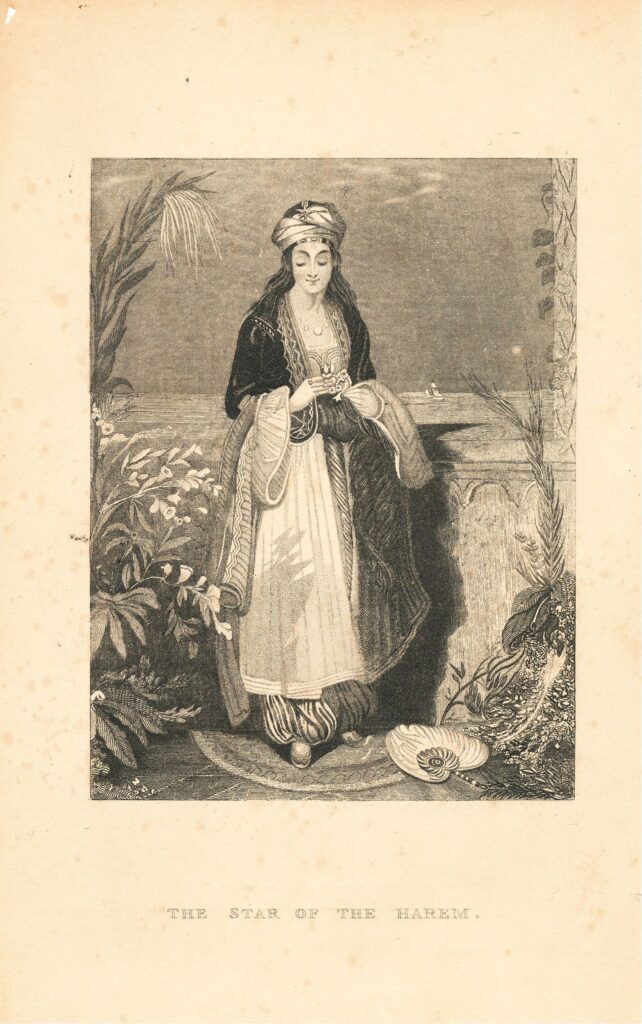
Leslie Peirce tells us that the imperial harem of Ottoman royalty was much like the household harem, only “more extensive and with a more highly articulated structure.”²² The Ottoman imperial harem was a “well-ordered place, and its founding principle was not the imprisoning of sexually desirable women,” says Andrea Deagon, but rather the “mandate that the elite of the Sultan’s household and court” be “protected from the mundane world by a concentric circle of attendants and assistants, with increasingly fewer admitted the closer” one became to the royal family.²³
From examining Ottoman administrative documents, Peirce tells us that the harem had a well-defined hierarchy of authority, with the matriarchal elders, such as the sultan’s mother, ruling over other women but also over younger males in the family.²⁴ For the Ottomans, the mother of the reigning sultan ruled the harem, and had authority over family members—such as royal offspring, unmarried or widowed princesses, and the sultan’s consorts—and those in administrative and service roles within the harem.²⁵ Also according to Peirce, important women within the dynastic household, particularly the Sultan’s mother, would assume legitimate roles of authority outside the royal household.²⁶ Deagon tells us that the women of the harem were chosen for their “physical perfection” and potential talents; a woman’s status and influence depended on whether or not she bore the sultan a son. Girls (as the women of the harem were selected for their positions at quite a young age) were assigned specific career tracks according to their individual skills, but most of the women of the harem were servants of various sorts.²⁷ In contrast to the women in Western Orientalist paintings who lounge listlessly on cushions, high-ranking women of the Ottoman harem were not powerless; they had some economic independence and were often property owners.²⁸
Although women could not hold official public political titles in early Islamic society or during the Ottoman Empire, the residents of the harem were “well placed to influence public affairs,” such as securing positions for their sons or acting as mediators between different political factions within the palace.²⁹ Fatema Mernissi emphasizes the harem as a space for political intrigues and power play, and tells us that “Caliph al-Mahdi, founder of the Abbasid dynasty,” was poisoned in “A.D. 785 by one of his favorite women who was madly in love with him.”³⁰ In the 17th century, during a struggle for regency over the boy sultan Mehmed IV, a corps of black eunuchs murdered the valid sultan Kösem in favor of her sister-in-law.³¹
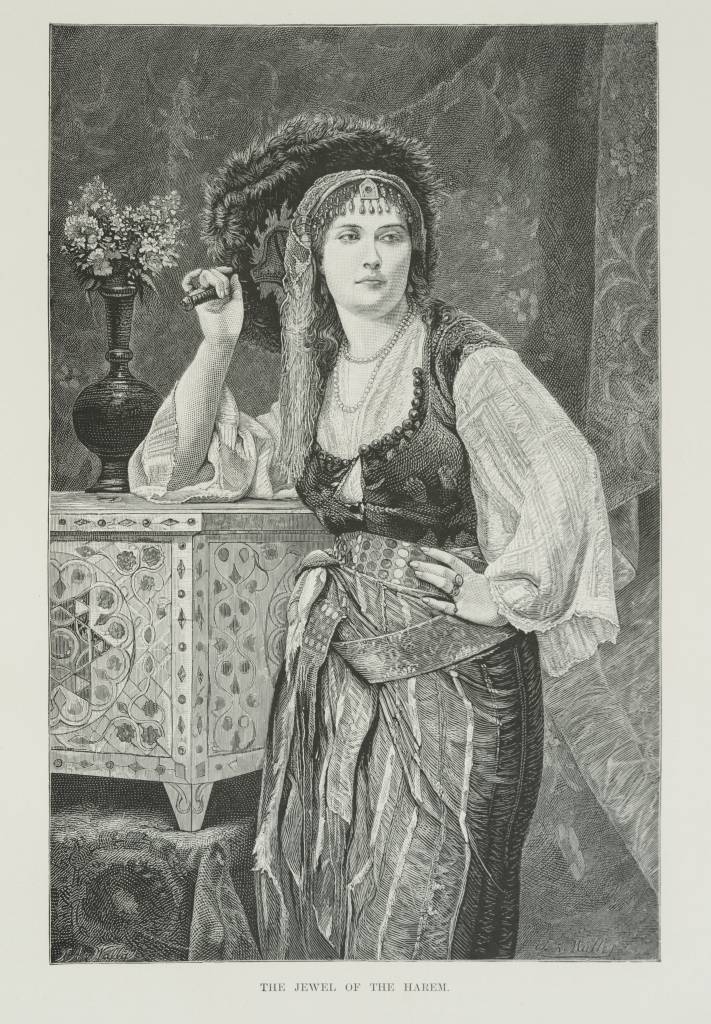
The eunuch, a figure of fascination and repulsion for Westerners, held important positions as guardsmen, messengers, and, in a way, bouncers, in caliphate and Ottoman harems. El Cheikh tells us that in the caliphate harem, the eunuchs—men who had been castrated—were the “heart of the harem monitoring access and partaking in all the informal politics that took place in it.” They could enter any space that was forbidden to other men.³² In the Ottoman harem, the eunuchs were entrusted with “taking and receiving messages between the Sultan and the Sultanas, transacting business, visiting the men’s apartments,” and many other important duties.³³ At Topkapı Palace, the white eunuchs, taken mostly from the Christian Balkans and Caucasus during Ottoman military campaigns there, attended the male pages; the black eunuchs, from the Horn of Africa and Sudan, served the “more prestigious wing that housed the sultan and the female harem.”³⁴ The black eunuch’s unique importance was further emphasized in their role of “preserving established hierarchies of power by maintaining segregation and controlling movement within the imperial family,” as internal palace gatekeepers.³⁵
Outside of the Ottoman Empire’s elite homes, the harem appears in different forms throughout the Muslim world. Fatema Mernissi, who grew up in a Moroccan harem, says that for her, the word “harem” is a “synonym for the family as an institution,” with gender-specific implications.³⁶ She also says in her groundbreaking work on male-female relations in Muslim society that “sexual segregation, the systematic prevention of interaction between men and women not related to each other by either marriage or blood […] divide all social space into male and female spaces.”³⁷ In this regard, the harem was a female space, as it was private and secluded from outsiders and non-family members. She says that “in order to prevent sexual interaction [not just intercourse as we know it, but also flirting, admiration, and even conversation] between members of the umma [sic] and members of the domestic universe, seclusion, and veiling (a symbolic form of seclusion) were developed.”³⁸ El Cheikh notes that outside the caliphate court of the Middle Ages, “only a small proportion of well-to-do urban families” practiced “strict seclusion of women.” She also notes that polygamy was an “expensive practice” that only the elite of society could afford.³⁹ Mernissi, who speaks of her own life in a 20th-century harem, adds that “many Muslim women” see “the seclusion of women […] as a source of pride,” because such seclusion “required huge economic investment,” and being a part of one indicated economic well-being.⁴⁰
Today, the harem as an institution is more exception than rule in the modern Middle East. During his presidency (from 1923 to 1938) Mustafa Kemal Atatürk, the first president of the Republic of Turkey, after the breakup of the Ottoman Empire, made sweeping reforms to Turkish law and society. One of those reforms abolished polygamy in 1926, a practice once afforded to Ottoman sultans and other high-ranking officials, with penalties for its practice being up to two years in prison. In addition to Turkey, of the other Middle Eastern states, only Tunisia, Lebanon, and Israel have formally outlawed polygamy; it is frowned upon in more secular Arab states such as Egypt.
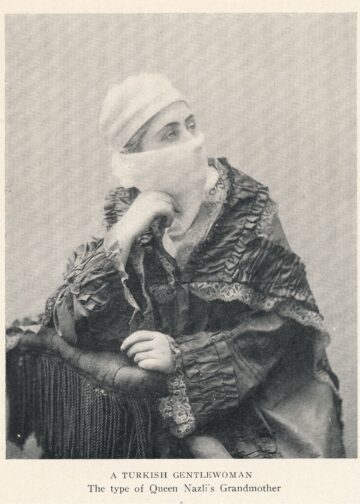
The content from this post is excerpted from The Salimpour School of Belly Dance Compendium. Volume 1: Beyond Jamila’s Articles. published by Suhaila International in 2015. This Compendium is an introduction to several topics raised in Jamila’s Article Book.
If you would like to make a citation for this article, we suggest the following format: Keyes, A. (2023). The Harem: Myth and Reality. Salimpour School. Retrieved insert retrieval date, from https://suhaila.com/the-harem-myth-and-reality
¹ Interestingly, the first Christian to describe the interior of Ottoman harem was Thomas Dallam, whom the King of England sent to Constantinople in 1599 to deliver a musical organ. The sultan allowed Dallam access to the harem to install the instrument, but he was forbidden from visiting beyond the men’s quarters into those of the women. He did, however, manage to catch a glimpse of the sultan’s concubines playing in their well-protected court one day, and he discovered to his surprise, that they were dressed like men, in pantaloons and blouses. For more, see Fatema Mernissi, Scheherezade Goes West: Different Cultures, Different Harems (New York: Washington Square Press, 2001), 105. See also N. M. Penzer, The Harēm (London: Spring Books, 1936), 27-41, for additional European accounts of the Ottoman harem from the 16th and 17th centuries.
² Latifa (Lynda Wilkinson), “The Harem: Contrasting Orientalist and Feminist Views,” Habibi 19:1 (February 2002), accessed November 11, 2013, http://thebestofhabibi.com/vol-19-no-1-feb-2002/the-harem/.
³ The word “seraglio,” a romantic term applied to the harem by Westerners, is an Italian adaptation of the Persian words sarā and saraī, meaning “place” or “building,” such as in the more familiar karwansarai (often Anglicized to “caravanserai,” meaning a place for caravans to spend the night or sell their goods). During the Crusades, Europeans in the Levant transformed the word into serail and serraglio; it then became conflated with the Italian serrato, meaning “to shut away,” and became the Italian word seraglio, meaning “a cage for wild animals.” This interpretation likely influenced the Western view that the harem was a tantamount to a prison for women. For more information, see Penzer, 16.
⁴ Leila Ahmed, “Western Ethnocentrism and the Perception of the Harem,” Feminist Studies 8:3 (1982): 524.
⁵ Marilyn Booth, introduction to Harem Histories: Envisioning Places and Living Spaces, ed. Marilyn Booth (Durham, North Carolina: Duke University Press, 2010), 3.
⁶ For a more in-depth look at Western interpretations of the harem, also see Latifa (Lynda Wilkinson), “The Female Other: Reversing the Gaze,” Habibi 18:2 (September 2000), accessed December 30, 2013, http://thebestofhabibi.com/volume-18-no-2-september-2000/the-female-other/. Wilkinson examines the perception of the harem as a den of sexual permissiveness, lesbianism, and Western colonial fantasy.
⁷ Donnalee Dox, “Dancing Around Orientalism,” TDR/The Drama Review 50:4 (2006): 59.
⁸ Judy Mabro, Veiled Half-Truths: Western Travelers’ Perception of Middle Eastern Women (London: I. B. Tauris & Co Ltd, 1991), 6-7.
⁹ Andrea Deagon, “‘Harem Girls’ Dance in Historical Harems,” The Belly Dance Reader (Fairfax, California: Gilded Serpent), 72.
¹⁰ Judy Mabro, Veiled Half-Truths, 6-7.
¹¹ Lady Mary Wortley Montagu, The Letters of Lady Mary Wortley Montagu (Boston: Roberts Brothers, 1876), 104.
¹² Latifa, “The Harem.”
¹³ Penzer, The Harēm, 15.
¹⁴ Peirce, The Imperial Harem, 5.
¹⁵ Penzer, The Harēm, 16.
¹⁶ Ahmed, “Western Ethnocentrism,” 524.
¹⁷ Natalie Smolenski, “Modes of Self-Representation among Female Arab Singers and Dancers,” McGill Journal of Middle East Studies 9 (2007): 54-5.
¹⁸ Nadia Maria El Cheikh, “Caliphal Harems, Household Harems,” in Harem Histories: Envisioning Places and Living Spaces, ed. Marilyn Booth (Durham, North Carolina: Duke University Press, 2010), 89.
¹⁹ El Cheikh, “Caliphal Harems,” 91.
²⁰ Leslie P. Peirce, The Imperial Harem: Women and Sovereignty in the Ottoman Empire (Oxford: Oxford University Press, 1993), 113.
²¹ Jateen Lad, “Panoptic Bodies: Black Eunuchs as Guardians of the Topkapı Harem,” in Harem Histories: Envisioning Places and Living Spaces, ed. Marilyn Booth (Durham, North Carolina: Duke University Press, 2010), 139.
²² Peirce, The Imperial Harem, 6.
²³ Deagon, “‘Harem Girls’,” 74.
²⁴ Wilkinson, “The Harem.”
²⁵ Peirce, The Imperial Harem, 6.
²⁶ Ibid., 7.
²⁷ Deagon, “‘Harem Girls’,” 75.
²⁸ Peirce, The Imperial Harem, 8.
²⁹ El Cheikh, “Caliphal Harems,” 100.
³⁰ Mernissi, Scheherezade Goes West, 12.
³¹ Lad, “Panoptic Bodies,” 166.
³² El Cheikh, “Caliphal Harems,” 93-4.
³³ Penzer, The Harem, 133.
³⁴ Lad, “Panoptic Bodies,” 143.
³⁵ Ibid., 141.
³⁶ Mernissi, Scheherezade Goes West, 32.
³⁷ Ibid., 97.
³⁸ Ibid., 140.
³⁹ El Cheikh, “Caliphal Harems,” 96.
⁴⁰ Fatima Mernissi, Beyond the Veil: Male-Female Dynamics in Modern Muslim Society (Bloomington, Indiana: Indiana University Press, 1987), 142.
